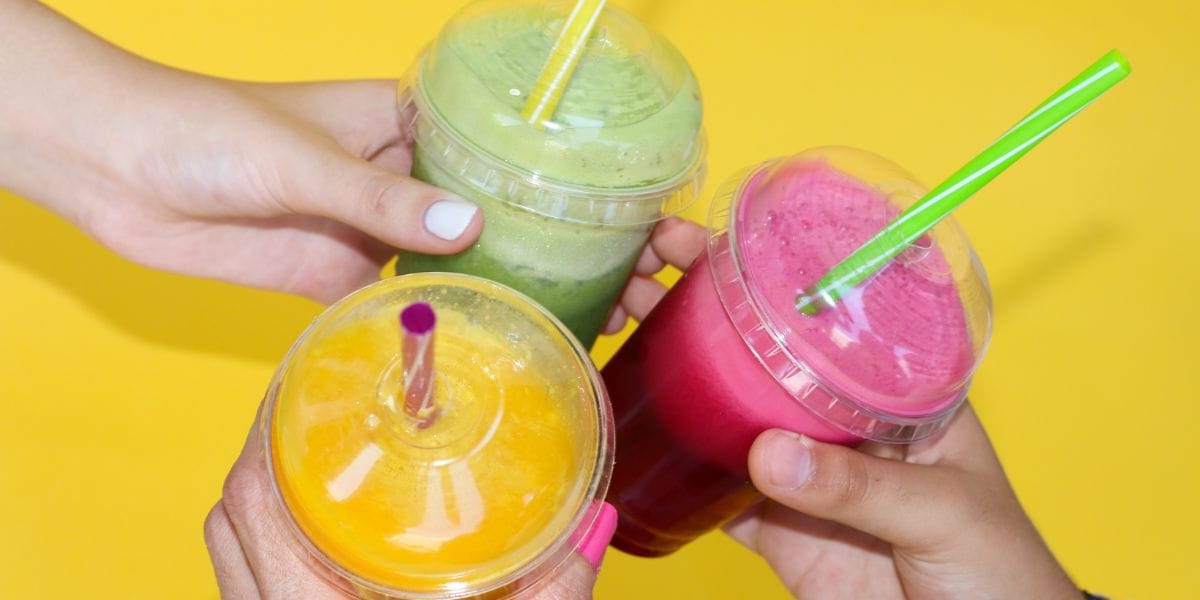Most Australians have owned or will own a pet at some stage in their lives. If you’re not one of the 40% of Australian households that owns a dog, you might just be one of the 27% that owns a cat. A startling 2% of Australian households own a reptile, too.
So lots of us own pets, and in Australia, pet care is big business. In 2019, pet owners spent $13 billion on their pets each year – $1 billion more than they did three years prior, according to the most recent Pets in Australia survey.
Pet ownership is a reality or a goal for many. While pet owners overwhelmingly recommend the benefits of ownership, they also list ongoing costs as a top drawback.
So how can you financially prepare for a new pet? And what are the best and worst case scenarios that you should plan for?
Finding the perfect pet
It turns out there’s a lot that goes into the search for a perfect pet.
John wanted a particular breed.
He explains, “We originally started looking around on the internet for a good responsible breeder and ended up going for a breeder down in Victoria and got our name on a priority list.
The breeder has an amazing online booking system which allocates time slots for each person in a queue so it was very fair.
To secure our position in the queue was a $100 deposit, which was held for one year; each year cost another $100 but our position was kept. The breeder has a price lock for that year. It was good timing we got her (his dog) when we did as the breeder was bumping up their price and our year was coming to an end.”

Pat who recently became a pet dad to Hugo confirms that it’s quite a stressful process.
“The breeders have limited supply and runs (obviously) so you need to do plenty of research and think about it in advance if you want one from a specific breeder... Then you go on a list... If they have another litter then you might know a couple months beforehand etc etc and it’s a stressful situation when you need to make the call.”
Of course, there are other options, such as pet stores and rescue shelters.
“We bought my cat for half price – $50 – because it was the last one of the litter left in the pet shop and nobody wanted him,” said Lewis.
Harry adopted his cats, “which cost like $80 or something.”
Or you could be like Rochelle, who got her dog for free from a friend.
So how much should you set aside to buy a pet? It depends how much you want to pay – and what you have your heart set on.
According to the Pets in Australia survey, the average cost of a dog was $627, but 15% of people paid more than $1,000 for theirs. The average cost of a cat was $308 – and 48% of people got their cats for free.
Bringing your fur baby home
The next thing to think about is how you’ll prepare your home for your new arrival. Will you get the bare essentials, or will you go overboard? No judgement here.
Pat broke down his initial expenses for us.
Puppy Transport: $200
"This was to get Hugo sent near us – COVID-19 stopped us from going to get him."
Pet Insurance: $35 a month.
"This isn’t a must-have but I want to have it for the first year just in case as I know of people who have had bad experiences with vet bills."
Crate, toys, blanket, lead, collar, bowls: $200
"I got most of these from Big W or Amazon as each can be very expensive... But a crate is a crate and I don't see the value added by a premium one compared to the ones Kmart/BigW sell. And he grows like crazy so highly likely the collar etc. will be short term."
Food, treats and puppy pads: $200
"The breeder recommended to use the products she uses as that's what they are used to for now. I also had some recommendations from friends as they are more sustainable and "real". Some products might not even be meat for all we know so while he is young I want to make sure I feed him the best so he grows strong and healthy."
Puppy school: $250
"Needed. Basic training can be done on YouTube these days for free and at home, but I want to socialise him and have an expert concentrate on him to make sure he is a well-behaved dog.”
John’s household took a project management approach. They spent more than $1,500 getting ready for Hallie to come home, and prepared with essentials such as toys and treats, but included a $250 mat, a $150 play pen, and $250 pet camera.
“We wanted a very particular breed which was very human friendly, very intelligent and hypoallergenic but also one that could grow up to be a bit bigger. Unfortunately it's just an expensive breed,” he said.
Nicole already had an existing dog, so she didn’t spend anything outside of taking her new dog to the vet to get her vaccinations up to date.
Day-to-day with your pet
“The best thing about Archie is he’s so chilled! He’s not bothered by anything! He’s always up for having fun, loves a cuddle and loves the water,” said Luke, who recently added Archie to his family. They spend their weekends stand-up paddleboarding.

Ongoing costs of keeping Archie include $60 for a monthly supply of dog food, $74 for worming tablets every six months, and $80 for monthly insurance, which will get cheaper once Archie turns one.
“Overall he's cost probably more than $1,000 more than I would normally expect for a dog,” Luke said.
So how much should you budget for your upfront and ongoing costs?
Again, it’s up to you how much you want to spend. According to the Pets in Australia survey, dogs cost an average of $1,627, per animal, each year. Cats come in cheaper at $962. The cheapest pet is a fish, which costs $38, per year, per fish.
When things go wrong
At Spaceship we advocate keeping an emergency fund – and this could play into your consideration when you become a paw-rent, too. Put some thought into how much to set aside for worst-case scenarios.
Remember Lewis, who paid $50 for his cat?
“Cobi has gum disease which has cost us around $1,000 already. I also had to fork out $3,000 to fly this adorable ball of fluff over the ditch to New Zealand,” he said.
View post on imgur.comMax’s family dog Leo escaped his home while he was on the phone one day. Unfortunately it got into an accident with a car. It’s okay – he survived – and has resumed living a really happy life.
“Leo’s incident cost around $6,000 to $7,000, mostly due to his surgery needing to be done at an after-hours emergency clinic which added about $2,000 to $3,000 to the cost.“
24% of pet owners surveyed had visited the vet for illness or injury in the prior year, with an average cost of $546 for dogs, and $371 for cats.
So, should you pay for pet insurance?
Pet insurance works much the same as human health insurance does — with different levels of cover and eligibility criteria.
Most pet owners don’t have pet insurance. 600,000 of the 7.3 million cat and dog owners in Australia do, according to Roy Morgan research. And according to Finder, they pay an average of $78 a month for dog insurance, and $52 for cat insurance.
Harry’s cats weren’t insured when they cost him thousands of dollars in vet expenses after getting exposed to lilies, which are poisonous to cats. He paid pet insurance for the following two years.
“I never used it for the next two years, so I stopped,” Harry said.
Max, whose dog survived an accident, remembers weighing up the costs and benefits of pet insurance.
“I remember doing research on pet insurance a long time ago when we first got Leo,” he said.
“I found that the average cost for large dogs over their lifetime ends up being about the same with or without insurance (not sure about insurance rates these days though).
But looking back, even though I would have paid the same amount with accumulated insurance costs, I actually think insurance payments could have been used as a budgeting tool itself instead of paying a lump sum when this sort of stuff happens.
I would still definitely set aside some extra money on top of an ongoing “rainy day” budget to be inclusive of pet expenses in the future though.”
When your pet ages
Suki was a farm dog who retired and now lives a calmer life in the city with her owner Sally.
An 11-year-old Kelpie, she’s the perfect Spaceship dog – having worked hard and invested during her working life, she’s now retired and living a future she probably never dreamed of (Ubering to the office, going for long walks by the water, and getting pats from everyone she meets).
When she first got to Sydney she needed a bit of TLC given the amount of exercise she’d been doing. She had arthritis giving her a bit of trouble.

Suki’s monthly expenses include special joint formula food, a joint supplement, a monthly vet check up, and arthritis medicine, plus a teeth cleaning and winter coat supplements, and Uber Pets. All up, Sally spends roughly $575 per month on Suki, and also pays $80 a night accommodation expenses when they go on holiday without her.
It’s clear that pets can become more expensive as they age. The RSPCA says that dogs can end up costing more than $25,000 over time.
Gone but never forgotten
And sadly, nothing lasts forever, including the bestest boys. As your pet nears the end of its life there are some final expenses that can kick in, too. Should you decide that your pet will be euthanised, it can cost between $100 and $300, according to Finder, excluding burial or cremation costs.
The takeaways
Pet ownership is expensive – more expensive than you may have realised.
Non-negotiables can include:
- Vaccination
- Registration
- Microchipping
- Worming & medicine
- Food
- Vet visits
- End of life
And discretionary expenses can include literally anything else you can think of.
The best way to prepare for it, is to prepare for it. Budgeting for upfront, ongoing, emergency and end-of-life costs could streamline your pet ownership journey – at least financially.
Emotionally?
Nothing can prepare you for this face.




